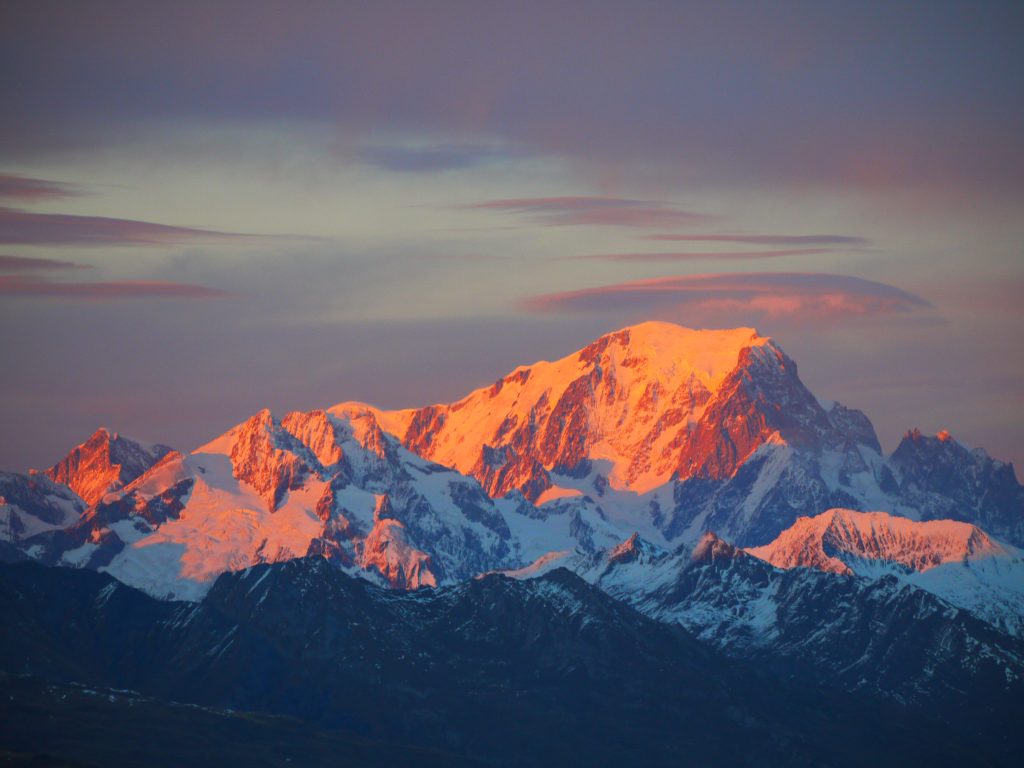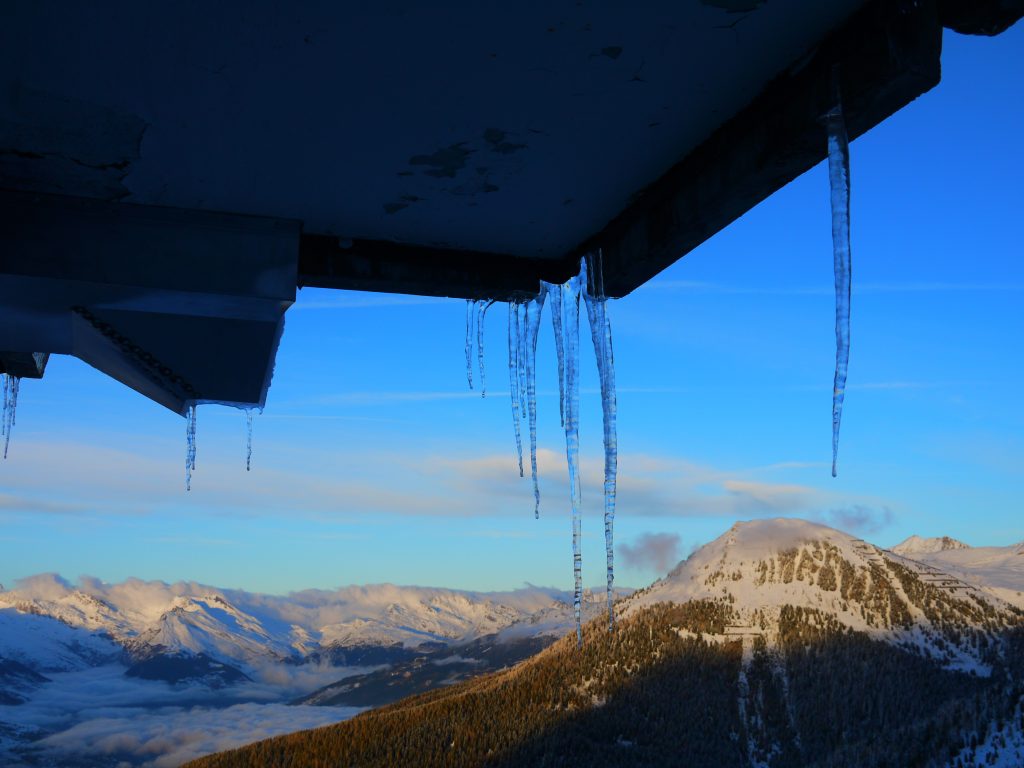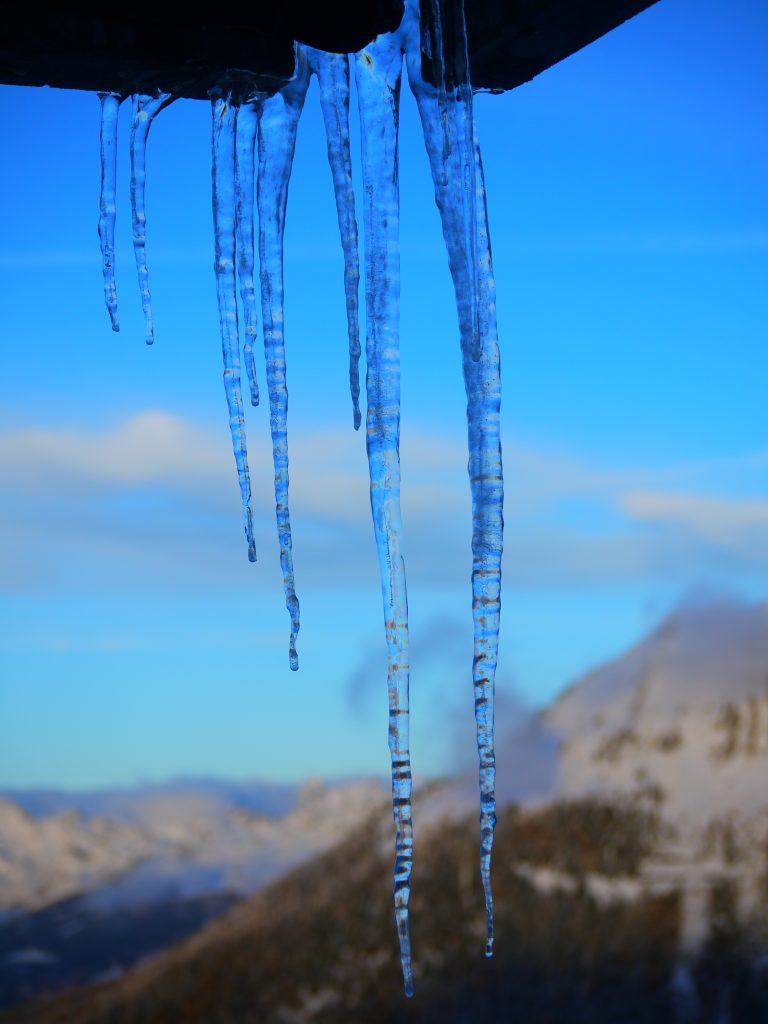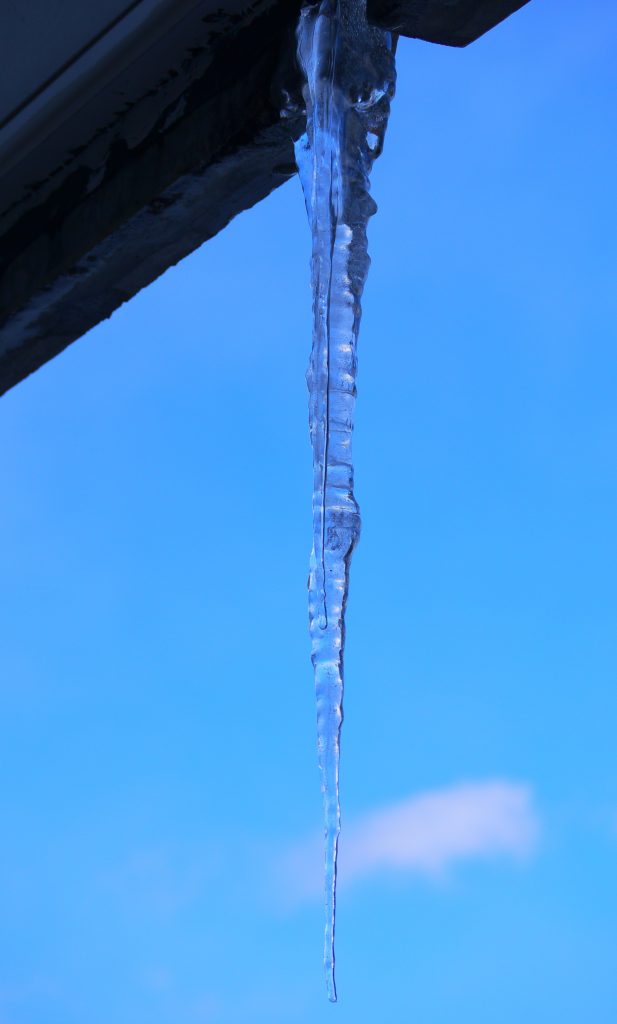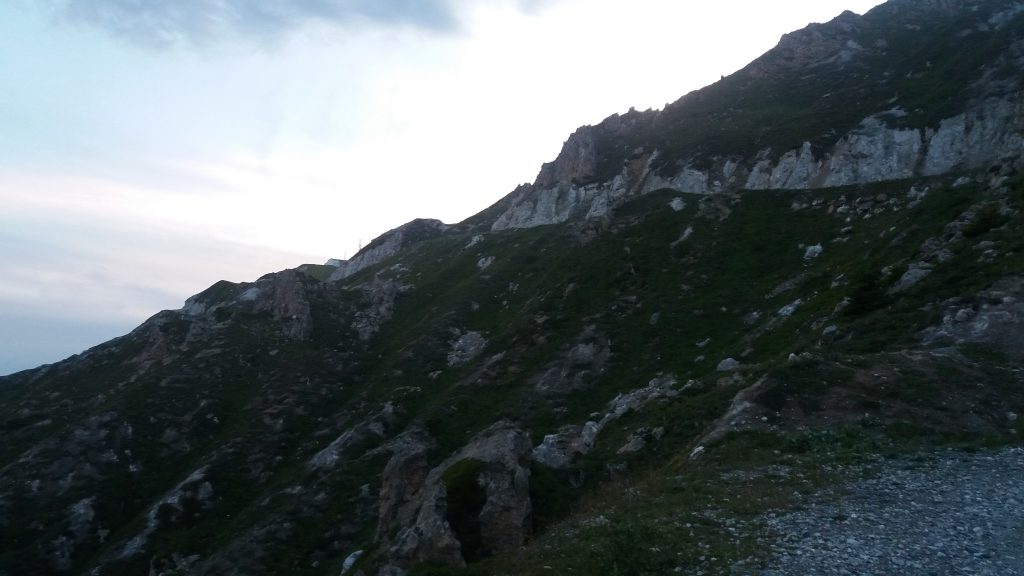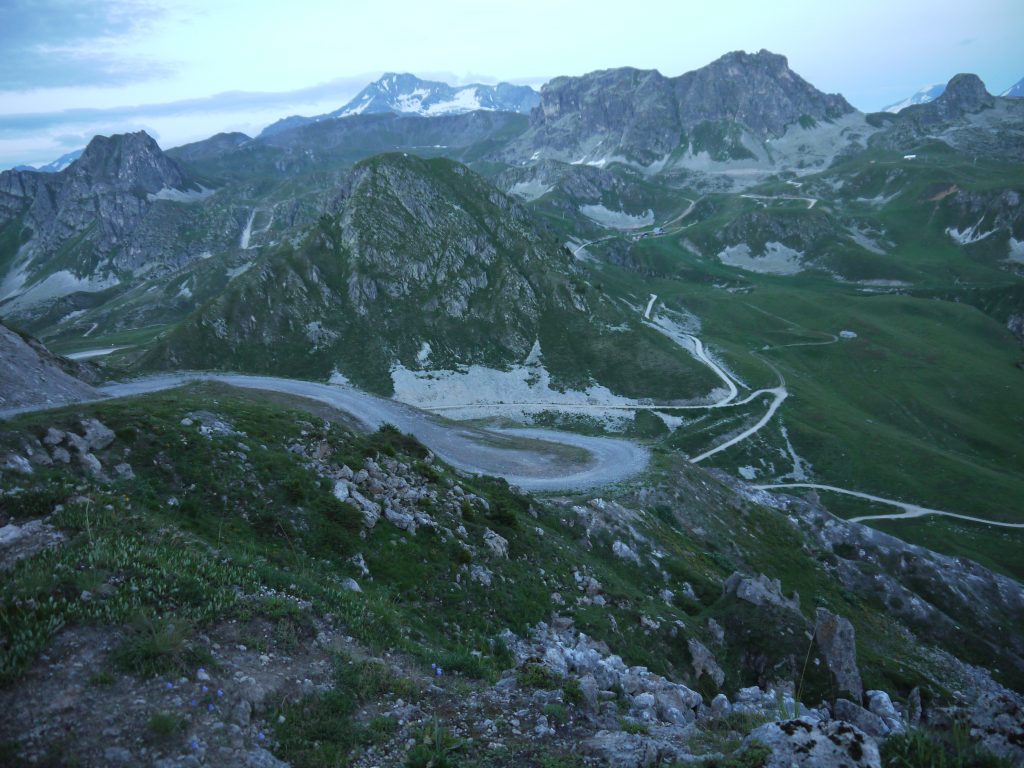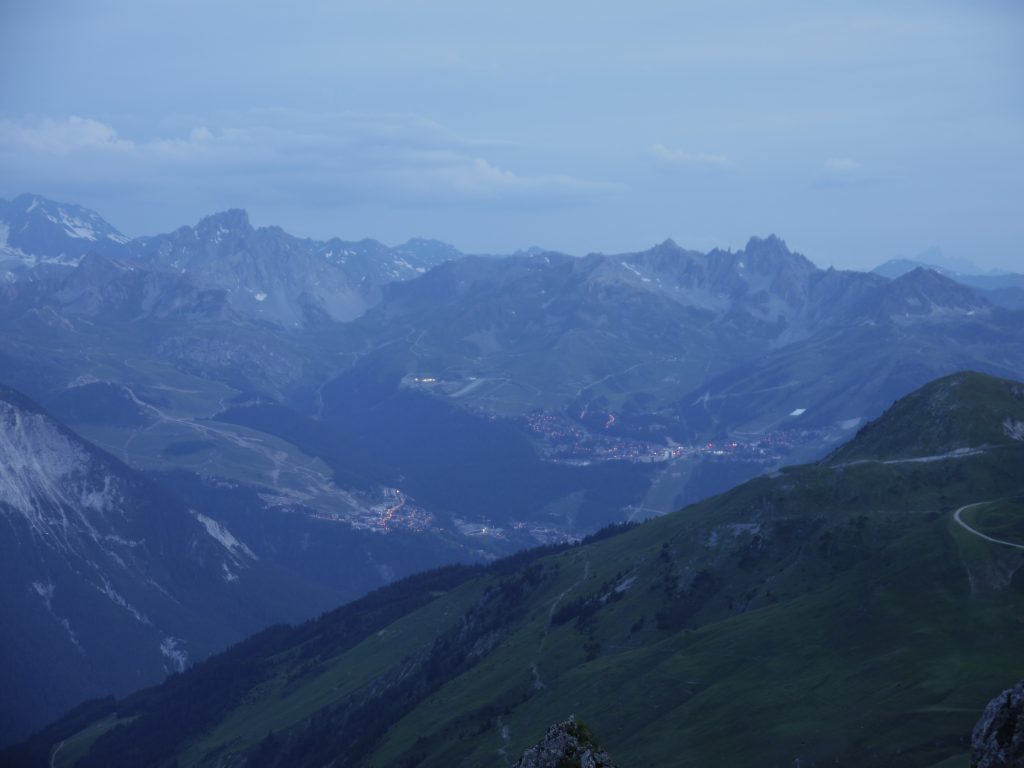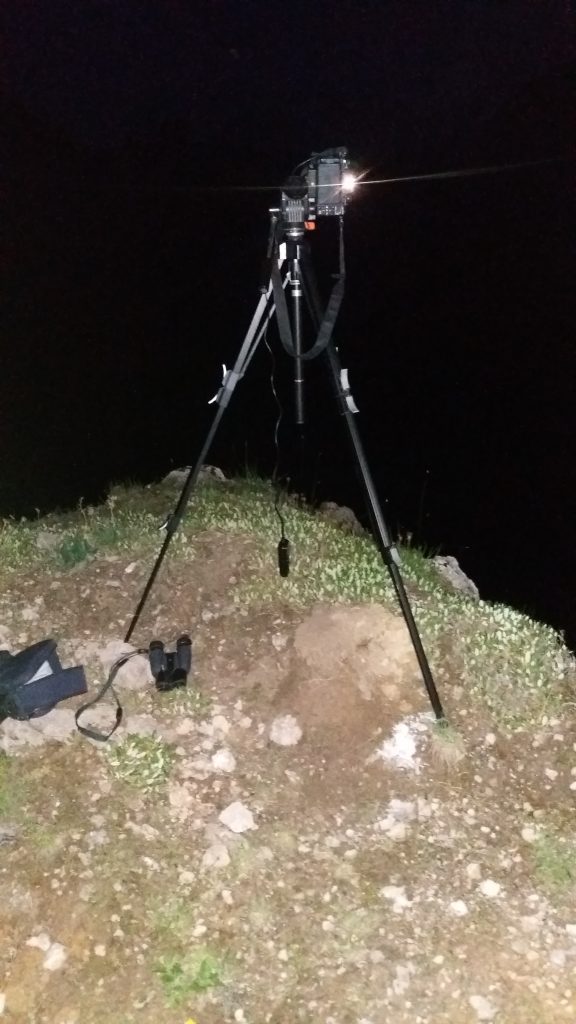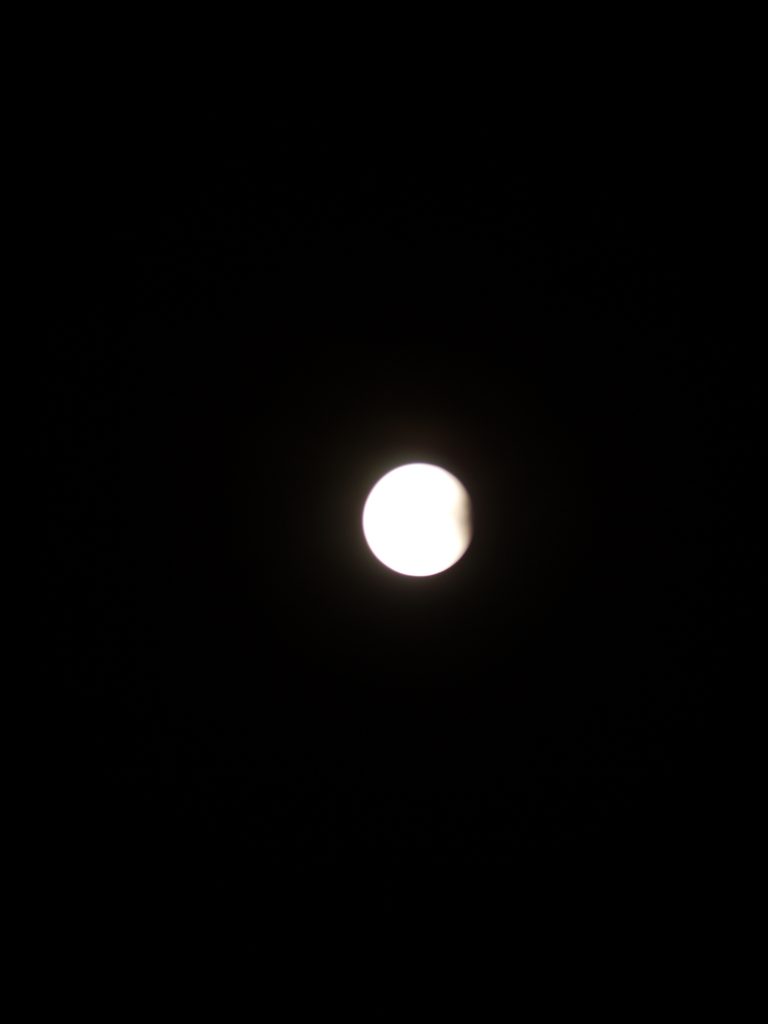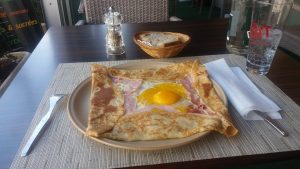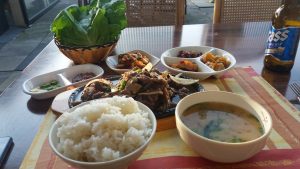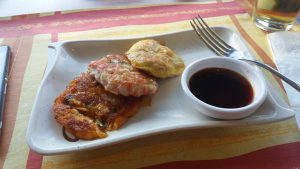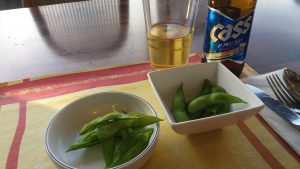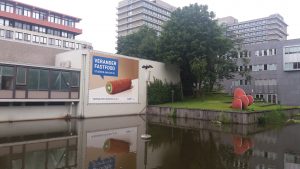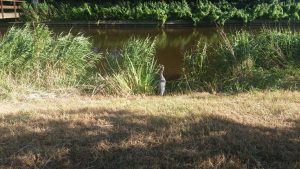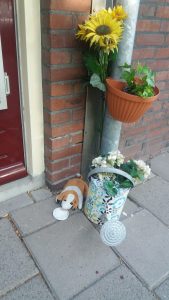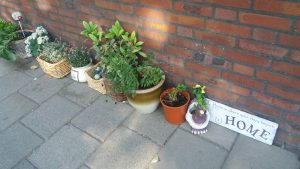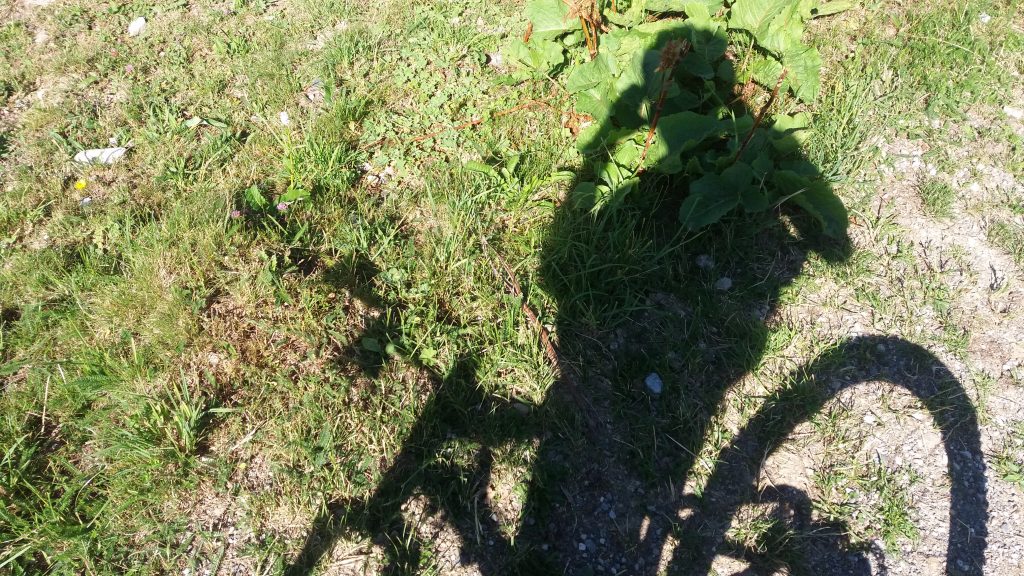
[I think all graphics in this post will expand if you click or double click on them.]
I thought that self-portrait would be a sensible way to start this little post. OK, I don’t really do sensible do I?!
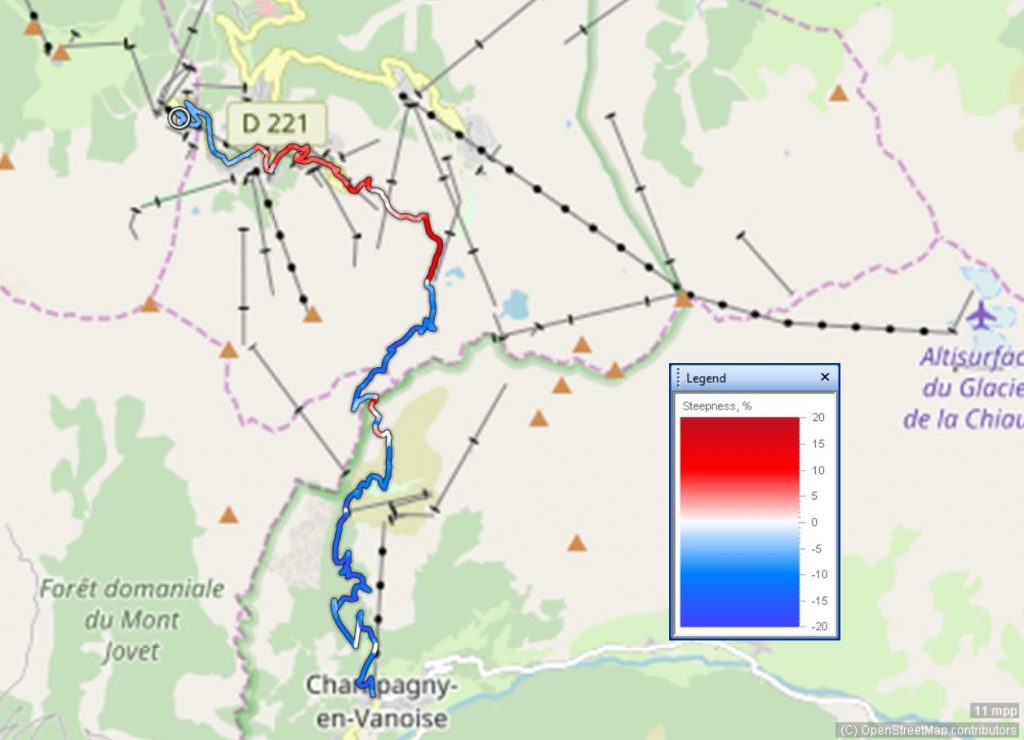
Talking of not really doing sensible, I’ve just wasted several hours, not for the first time, trying get a better way of putting GPS recorded tracks into WordPress blog posts … and failed again! I will try to pass on without cursing too loudly.
Back on the 23rd of June I had scoped out the trip up to the saddle between my valley and the Champagny valley (Cerise and I go exploring). On that occasion my concern was whether the route over the saddle in the big ridge between the Aime area and the Champagny valley would be blocked with snow and I was wondering if I should tell CA that we couldn’t meet if that had been the case. That seems bizarre now after nearly a month of roasting sun has blasted the snow away except where it is much, much higher than that.
[I’m using “CA” and “CA+1” as I quite often do here, after discussion with each person, as a bit of anonymisation/pseudonymisation to protect the innocent, and particularly those with clinical jobs.]
The saddle is where the track changes from the challenging red climbing gradient through a white moment to the blue descent! Back in June, I had gone a little over the top but as I’d established that the way was visibly clear from there downwards, I had turned back. That meant that I hadn’t realised just how pebbly and challengingly steep the rest of the downhill from there was. I’m used to that area with skis on my feet when it’s covered with piste basher bashed snow so when I had last been on it it was easy blue or at worst slightly reddish skiing. Oh boy it’s different on the track on a mountain bike: definite red and I was pretty glad I got down to Champagny in one piece and without Cerise and I parting company anywhere! Here’s the profile: grey is the elevation and red my heart rate.
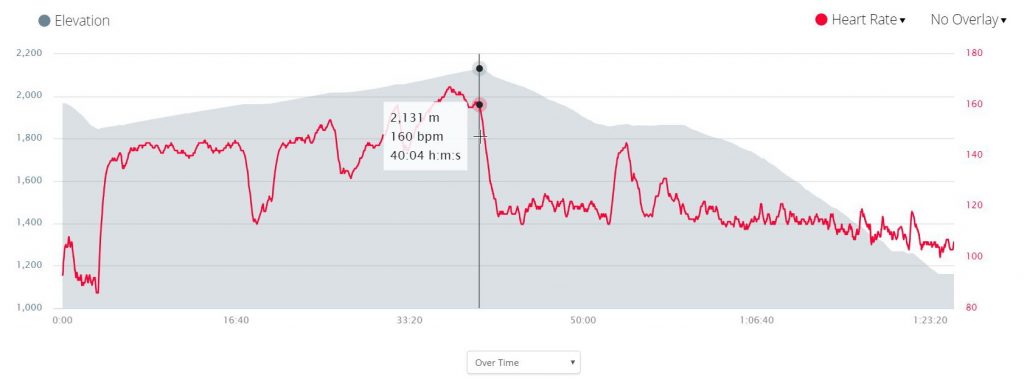
The whole journey took about 80 minutes. It’s amusing to me to see how my heart rate dropped dramatically as soon as I was no longer slogging uphill. Back at the time it felt as if it stayed pretty high with the concentration on the track and with not a little anxiety. In fact, there’s a slight reduction through the descent isn’t there? (Those peaks are brief uphill bits.) I wonder if the slight drop in HR really was me getting used to downhill rough track moutain biking?!
OK, that’s all the geeky stuff, probably reflects my anxieties about mortality, morbidity and generally about ageing. Here’s the view back from the first stop (the first point at which my HR drops in that plot).
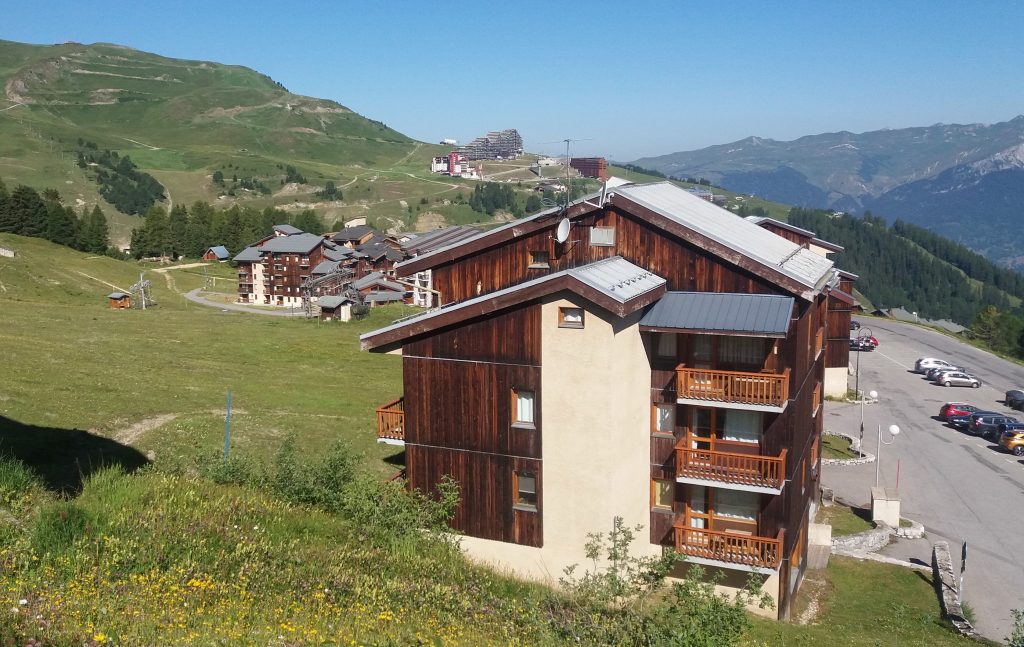
The small bunch of ski apartments in the foreground is part of a collection called “Plagne Villages” and Aime 2000, my Alpine home now, is that strange ridged building breaking the skyline in the distance. Here’s the view la bit later, a bit below the saddle and looking down into Champagny. At that point I was just getting into the downhill (and pausing to appreciate that it was going to be a be lot more what cyclists call “technical”). It was to get a lot steeper lower down!
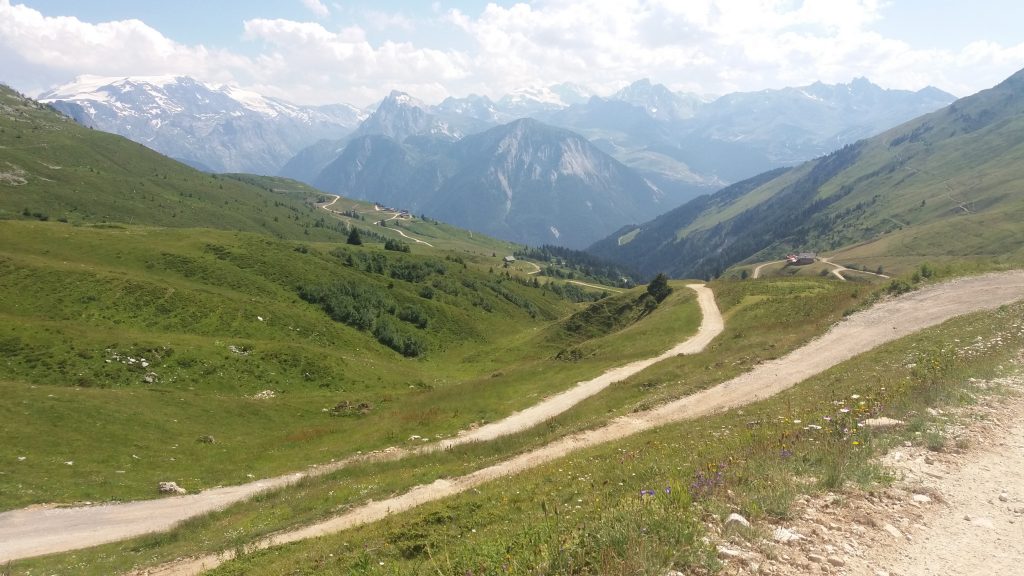
I made it down and basked in the roasting sun waiting for CA+1 to arrive. We spent the next few hours having a very leisurely meal in a local restaurant and catching up and largely succeeding in not talking about work. Cycling was a good topic of conversation, as CA’s +1 is a keen cyclist but also because they and I would each watch different ends of the 12th stage of the Tour de France the next day. However, one topic that emerged was whether I was, or should be, lonely, up here. I’ve got to ponder that haven’t I?
Isolation/loneliness
This pondering had started when I met up with another great ex-colleague on the anti-Trump march last week. She too is now close friend like CA, and we’d been colleagues in Nottingham. She had challenged me about isolation and loneliness clearly a bit puzzled by, or concerned for, me.
Until that challenge I hadn’t really thought much about it and last Wednesday meeting my first (near) visitors seemed a good time to chew it a bit more. My main response, for now, is simply “Well, it’s pretty isolated up here of course, but I’m not lonely, no.” I am qualifying that by adding that perhaps it’s much too early to judge. I had exactly two weeks up here from 10.vi.18 to 24.vi.18 when being here was very new and there seemed much to do to get set up to live here. Since then I’ve only had four more days up here, and now it’s the summer season so there are many holidaymakers around, though a fraction of the numbers up here in the ski season. Also there are now all the shop and restaurant staff who come in for July and August to make the area a resort again. And, of course, I’ve now spent about four hours of my four days in this lovely meeting with CA+1!
However, there is a question to address isn’t there. Undoubtedly, it’s a pretty isolated life up here, and there is a sort of isolation even now when people around me are people I don’t really know, and perhaps particularly when you don’t make a very good job of understanding, or speaking in, their language. I think I felt slightly more alone, but still not lonely, down in Aime on Thursday surrounded by French (and at least two Brits I heard) watching the Tour de France go by. There are a few people who work up here whom I guess I’ve known for 14 years but, though I’m fond of them, language and our very different worlds mean I feel frustrated not to be able to talk more easily and about anything I or they might want to. However, we’re not close. The only ones who will be here after everything shuts down again at the end of August are les gardiens and I think that they and I are OK to keep fairly amicable with each other but very separate. I suspect that’ oes with the job for them: be friendly to people when there’s a need to interact, e.g. when one accosted me this morning to tell me some letters had arrived from Orange.fr, but otherwise don’t get involved.
So in terms of physical proximity and conversation, this is a pretty isolated way of life here, and from the end of August it will be even more so. I’ll be going back home and to Llantwit to see my parents for bit of time in September but then the first real stint of isolation will start, probably twelve weeks broken only by a couple days for a work trip to Barcelona. At the moment I have no sense that I’ll go stir crazy, I’m actually looking forward to it I think!
Of course, in our current world, there are many ways in which I’m still in converations with many people that don’t need physical proximity. Those include this blog of course. Howver, I don’t think my comfort being alone up here is just about having all those though I do think it would be much, much harder without them. I’ll come back to thinking more about those connections and communication channels in the next weeks and months. However, I know that part of what my friends are exploring is something crucial about physical proximity in communication.
Anyway, putting cyberconnections to one side for now, the challenge on the march, and faced with CA’s tactful but clear amused sympathy with those earlier questions about missing people and loneliness was clearly that this makes me seem a bit weird! That’s a bit uncomfortable and has forced me to confront this issue!
One way of looking at this is that I think I’ve always been someone quite happy to minimise contact with other humans; I’ve always been happy to be in the country with a “natural environment” and birds as company. I put that “natural environment” in quotes as, at least in most of Europe, there’s nowhere that isn’t shaped by humans whether that shaping is recent or ancient. I think I realised this at around ten years old and it’s important and I think it’s pertinent to how I experience being up here.
That seemed so important that I had to check my facts, and the moment of clear recognition that pretty much all the British landscape is at least cosmetically touched by humans, and much is only as it is because of centuries, millennia, of human impacts. It turns out that I must have been 13 as to me the moment of revelation was from a book. That I must have been at least 13 makes sense as I have a clear memory of reading the book that changed my view for ever that is definitley in the bedroom I had when we lived in Leamington Spa and we moved there when I was 11. The book was The making of the English landscape by W.G. Hoskins and it was published in 1970. It feels a bit odd now to find that must only have crystallised things I’d known much earlier, I’m clear that saw the “natural environment” as shaped by human actions well before 13, I’d say before 10. Pondering this now I think the sense of how humans engraved themselves, ourselves, for good and ill, on the land goes way back. I can remember a work colleague of Dad’s telling us how the oak trees on the farm I spent so many hours, days wandering across as a child between 6 and 11 were centuries old. That wasn’t explicitly about human intervention but I think I already sensed how humans had adapted hedgerows to the trees and probably removed so many trees that weren’t useful or wanted where they were.
Why does this matter? When I’m not up here quite a bit of my time is spent working alone at a keyboard: not so different from here. However, back “down there”, there are also busy times when I’m in “normal” connectedness with other people. In those times, like everyone else, I’m immersed in the currency, the immediacy of the interactions. The time frame can be in split seconds (try waiting too long, or intervening too soon, in a psychotherapy group that has gone near the “light blue touchpaper” moment of near criticality. You need to get the carbon control rods of the right, comment in to prevent an explosion, but do it too often, too soon, the group never does any useful work: mistiming by less than a second can be disastrous yet playing safe too much simply wastes everyone’s time. That urgency is perhaps particularly true of group work but certainly can be there in or family, couple and even in individual sessions, though my sense was that there was generally slightly more time to play with there.
Even in a lovely, really heartwarming, social contact, such as this first meeting with old friends coming into (the edge of) my new life, is focused in the minutes and hours of the overlap, we’re in “short time”. Those minutes and hours are precious and, as on this occasion, over fast. The topics do stretch the time window: CA and I first met early in 2008 I think, and we worked together, including facilitating groups together at times, for six to seven years, until late 2014. We have stayed in touch, as I have with a number of colleagues from that post, ever sinced despite my being only fairly rarely in Nottingham now. We do talk about the whole of our lives so I guess the frame of conversation can go back up to 40 to 50 years. Of course we talk forward too, think onwards, and have children, so I guess some of that forward reach goes even a bit further than our likely life expectancies, but looking backwards and forwards involves a rapid shading of things out of focus; they become sketchy just as resolution at the edges of our field of vision falls off. That quality of focus falls off more rapidly looking forwards than backwards as it must and I guess my reflections above about the Hoskins book illustrate that loss of accuracy and definition as I look back. However, all these interactions are quite “current”, their total span is well under a century.
I think this is oddly pertinent to being up here. I’m not sure how best to explain this, and I think I’m about to leave off wrestling with these questions here for today, but something that stops me being lonely here, or, so far,seems to do so, is about feeling a space, time and quite literally a vision in every direction, that goes back into geological prehistory, that makes my own life just a detail, like any one flower on the meadows up here.
Looking out the window at the superb view here I know are there are scratches on the landscape that can’t necessarily see, or that I can’t identify, that go back to human prehistory. They were inscribed on what nature offered back when our species was already shaping things dramatically in order to survive, but when we had yet to use written language. Then there are at least a couple of millennia (the Romans were mining silver and other minerals here) of historical markers, both the really obvious buildings but also things like where there trees and where there aren’t, where there are odd changes dents in the pasture and the walls of fields. There’s something in the shift of perspective from short to long time that was a motivation for my 2016 pelerinage, and started this blog. That motivation, promising myself the cycle ride back when I was 18-21, seems to me to be something about acknowledging being part of a stream of humanity with all the glorious, and all the truly, truly terrible things that we do and about juxtaposing them against, say, Mont Blanc towering over us, almost, but not quite unmarked by us.
I’m intrigued, now as I’m writing, in this very self-centred way, about meeting CA+1, that this seems to be about managing a location in time, as well as managing distance from others. I spent a lot of yesterday and today creating the calendar on this site and hence the wherewithal for the site and this blog to have a more intricate historical weave. I suspect it wasn’t an accident that these reflections about isolation have turned to time and that part of what the work creating the calendar did for me was to relieve writing here of some pressures for immediacy, some urgency, that they had for me before.
I guess it’s a pretty fundamental human power and responsibility to manage our location in time and in relationships; now I find myself, kicked onwards by the Brexit madness, with time in a sort of agnostic’s retreat, to work on that!
Let’s finish with some ‘photos. Click or double click on the image to get full screen. Yes, I think the display is pretty unattractive but it’s all I’ve managed to achieve so far!
[Best_Wordpress_Gallery id=”10″ gal_title=”Meeting CA+1 in Champagny: the ride!”]

